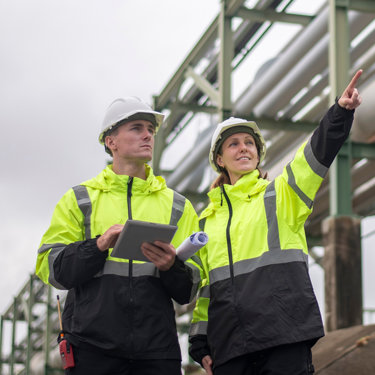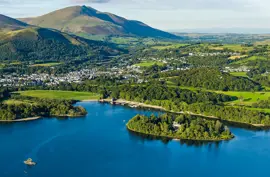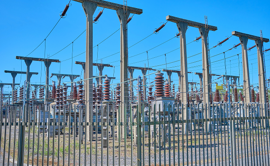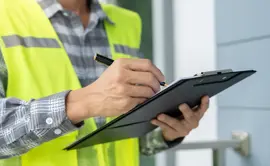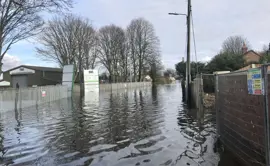Section 82: balancing delivery of legislation while ensuring value for money
Published: 2 October 2025
By Dave Walker, Global Future Trends Director at Detectronic
Monitoring the water quality of discharges at overflows through Section 82 is one of the most significant undertakings in the water sector since water leakage reduction.
Given the complexity and scale of what is required, it is inevitable that it will take time to get this right. Challenges such as land access and technology are critical to solve before solutions can be implemented.
So, how do you balance government and regulatory expectations with procuring the right product? Where is best to focus effort right now to be seen to be offering strong value for money to customers and ensure quick gains toward outcome delivery incentives early in AMP8?
Let’s go back to the beginning.
What is Section 82?
Section 82 of the Environment Act 2021 refers to monitoring the quality of water potentially affected by discharges from water company wastewater assets such as storm overflows from the sewer network and sewage disposal treatment works.
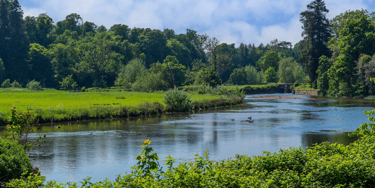
Sewerage undertakers in England must continuously monitor the quality of water in watercourses upstream and downstream of an asset outfall for the following parameters:
- Levels of dissolved oxygen
- Temperature
- pH values
- Turbidity
- Levels of ammonia
Monitoring must take place at least every 15 minutes at high-risk times but can be every hour at other times.
Data gathered from the monitoring must be published in near real-time and include contextual information, such as event duration monitoring. Sewerage undertakers are instructed to focus on high-priority sites in the initial phase of installations, with complete rollout to be concluded by 2035.
Addressing the challenges posed by Section 82
In theory, all of this sounds completely feasible. In practice, however, it is anything but, since there are numerous challenges for water companies to address before they can even begin to monitor watercourses within the network.
Monitoring water quality both upstream and downstream requires sensors to be strategically located within the watercourse. Any sensors used must demonstrate a high degree of accuracy, reliability, and repeatability as well as be easy to maintain and service. This brings about the first challenge posed by Section 82: land access.
Access all areas
Many storm overflow sites are located on private land. Water companies will need to approach each respective landowner, taking into account Riparian water rights, to request permission to access the land – and not just once or twice. Site teams will need to install monitoring equipment, set up a bespoke infrastructure to effectively support and power monitoring (including the construction of kiosks, solar panels, or wind turbines), and carry out ongoing maintenance of the instrumentation.
No statutory rights have been provided to water companies in the Environment Act 2021, so liaising with landowners is going to take up valuable time and incur costs. Planning permission will also be required to deploy technology into the watercourse. Furthermore, all the equipment – battery packs, kiosks, solar panels, etc – is expensive and the risk of vandalism or theft must be mitigated. The time, cost, and legislation surrounding the delivery of all of this would be immense.
Once an access plan is agreed, hundreds of sensors require installation that could ultimately prove to be wholly unreliable and inaccurate, meaning the data they provide will be summarily dismissed by statutory and legislative bodies. Stakeholders will ask, “Why did we spend all this money and waste all that time for the monitoring not to work?”
Which brings us onto the other challenge facing water companies: technology.
The technology we require isn’t efficient – yet
We are about to embark on a project that will see us focus on addressing the limitations of Section 82 of the Environment Act 2021 concerning water quality monitoring.
One of these limitations is that the technology currently available isn’t exactly what is required to successfully fulfil Section 82. It’s also expensive to purchase and maintain.
Any new technology currently in development that does allow the fulfilment of Section 82 must be researched and fully tested in field trials before it can be successfully implemented.
Solving the ammonia problem
Ammonia monitoring is notoriously hard. Accuracy of readings is difficult to deliver consistently.

Wet chemistry and colorimetric analysis still remain the most common methods of quantifying aqueous ammonia in a laboratory. However, with any optical engine/spectrometry, when employed out in the field it can be problematic due to lenses becoming fouled or turbidity affecting the light intensity. Technology – or lack of it – and specific instrumentation to accurately and consistently monitor ammonia is one of the key reasons why water companies should slow down the delivery of Section 82.
Calibrating for ammonia
Calibration is also a factor for ammonia.
In tests conducted in a lab in Spain recently, we identified the drift of an ion selective electrode (ISE) ammonia sensor over a month. In the test, we looked at standard calibration vs standard addition. It proved that without regular 15 min calibration, standard addition-typical ISE drift which is common to all manufacturers. This means inaccurate and unreliable results leading to potentially false pollution incident alarms and a high number of call-outs for manual recalibration.
Laboratory standards recommend ISE recalibration every 3 hours to prevent this drift.
Our current Section 82 continuous water quality monitoring has a 15 min calibration cycle to minimise this drift. Although our fixed-site solution overcomes the drift issue, there is a cost for the calibration reagents as we use a well-known standard addition method for calibrating every 15 minutes. The size of the kiosk and the two batteries is also unrealistic in terms of cost, space, power, and land access required to make these feasible in most instances.
Investigating how the requirements of Section 82 can be met
UK Water Industry Research (UKWIR) invited expressions of interest from potential contractors to deliver the project: Environment Act S82 (INV1) Continuous Water Quality Monitoring Investigations/Pilots in Estuarine Environments.
“The project aims to investigate how the requirements of Section 82 can be met in different estuarine environments given the available technologies and techniques. The project is not only about testing monitoring equipment (technology) but needs to provide a comprehensive account of practical considerations, limitations and alternative approaches.”
UKWIR has allocated £2.5million for this project. That’s serious investment and it shows the government wants to ensure that water and sewerage companies get Section 82 right. And they can only do that by having the right technology to solve Section 82. Right now, that technology simply does not exist. Plus, the resulting report from UKWIR will not be published until 2027.
In one of the most significant and complex Innovate UK’s Knowledge Transfer Partnership projects ever granted, Detectronic has received funding for an initiative that brings together cutting-edge expertise from two leading academic institutions with Detectronic.
The collaboration with City St George's, University of London and The University of Sheffield aims to address the limitations of Section 82 of the Environment Act 2021 concerning water quality monitoring. But why is this initiative so important?
The research we undertake during the project will allow us to fully understand and rigorously test the technology so we can understand what can be achieved and what can’t. We already know some of the sensor technology currently in development won’t be ready until 2027. This begs the question: if the equipment that exists today isn’t up to the job, why would you even consider purchasing it, let alone implementing it?
When to focus on delivery of Section 82
We all want to understand the state of play for Section 82 in relation to cost and technology. Following our breakfast meeting with MP Clive Betts at Portcullis House in February, Detectronic welcomed the government and water industry's exploration of Section 82 through UKWIR.
The initiative presents a valuable opportunity to critically assess the limitations of current technologies and define the advancements necessary to support what is being positioned as one of the most significant undertakings in the water sector since water leakage reduction.
All of this will take time, but it will be time well spent. Our advice to water companies is to slow down your spending on Section 82 projects until UKWIR release their report in 2027.
We know that some water companies have already started as they’ve been told to complete Section 82 as soon as possible. We believe water companies should focus on outcome delivery incentives and Section 81 (such as the implementation of MCERTS equipment) while keeping a watching brief on Section 82 as the technology develops.
Putting the focus on Section 81
Section 81 stipulates that storm overflow discharges in England must be reported, including their location and where the discharge begins and ends. It mandates that water companies enhance their Event Duration Monitoring (EDM) programs in AMP8, with an emphasis on data transparency. This will involve ensuring traceability and trust by choosing dependable technology that provides that assurance. The Environment Agency’s MCERTs EDM Standard will be crucial in ensuring transparency is achieved with confidence.
We still believe that as Section 81 is a proven and established area in both technology and implementation, early investments in this sector will be seen as offering strong value for money to customers and provide an easy ODI gain early in the AMP. Expediting efforts in this key area presents a straightforward win for WASCs and their customers.
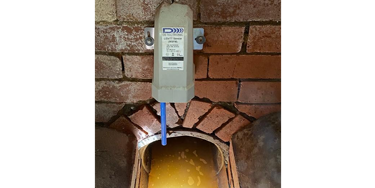
A strategic pause for long-term success
Section 82 represents a transformative shift in how the water industry monitors and manages environmental impact, but its successful implementation hinges on overcoming significant technological and logistical hurdles.
While the ambition is commendable, rushing into large-scale deployments with immature technology risks undermining the very goals the legislation seeks to achieve. Instead, a strategic pause, focused on rigorous research, field trials, and collaboration will ensure that future investments deliver reliable data, regulatory compliance, and genuine value for money.
In the meantime, prioritising proven initiatives like Section 81 and MCERTs-compliant event duration monitoring programmes offers water companies a clear path to early gains toward outcome delivery incentives and customer trust.
By aligning short-term actions with long-term readiness, the water sector can balance legislative delivery with budget responsibility, ensuring that when Section 82 is fully realised, it is done right the first time.
More from our Knowledge Hub
Environmental compliance today, creating a sustainable tomorrow
Helping you reduce risk to the environment and your operation by managing assets compliantly while achieving commercial, ESG, and net-zero goals.
Contact our experts